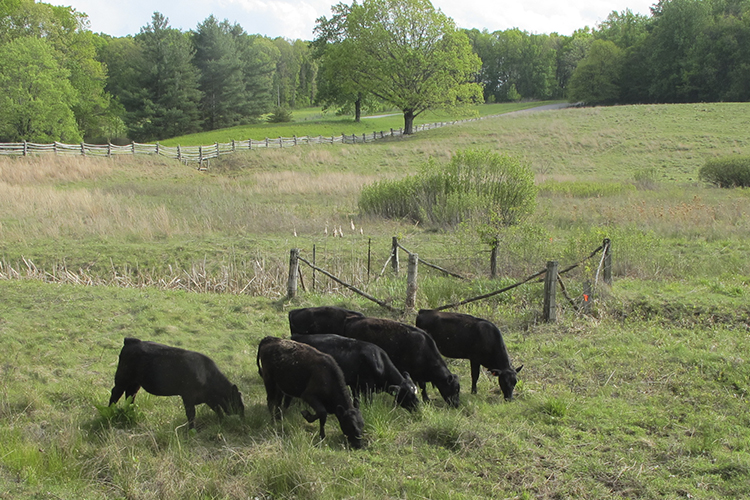The bog turtle is America’s smallest and one of its rarest turtles. It measures just 3-4 inches long and lives in small, sunny, open meadows and wetlands of the Northeast and southern Appalachia – a variety of habitat that meets all bog turtle needs like foraging, nesting, basking, and hibernating. These same small wetlands also purify water, recharge underground aquifers, and absorb floodwaters.
Bog turtles can live for 40-50 years and often spend their lives in the same area where they were born. Because of this, preserving their habitat is critical to the survival of the species – listed as threatened on the U.S. Fish and Wildlife Service's (FWS) Endangered Species list since 1997. The greatest threats to bog turtles are land conversion (resulting in habitat degradation and fragmentation), invasive exotic and native plants (habitat succession), and illegal trade and collecting. Today, much of the bog turtle’s habitat is on privately owned land and in agricultural areas.
In 2012, USDA’s Natural Resources Conservation Service (NRCS) partnered with the FWS to further help the bog turtle population recover by establishing it as a target species under a Working Lands for Wildlife initiative. Working with producers and private landowners, NRCS has protected 83 occupied wetlands, or 45% of the FWS habitat recovery goal for delisting the bog turtle as a threatened species by 2050. In addition, NRCS-funded easements have protected another 70 wetlands within 2000 meters of occupied habitat to support turtle movements and the health of wetland complexes where bog turtles live. Additional wetlands have been protected and managed by FWS, state agency partners, and conservation groups and further assessment in 2022 will consolidate the efforts of all parties in reaching the 2050 goals set by FWS.
The NRCS Working Lands for Wildlife (WLFW) initiative has been successful in achieving this bog turtle habitat protection through the former Wetlands Reserve Program and current Agricultural Conservation Easement Program - Wetland Reserve Enhancement easements on wetlands identified in the species’ recovery plan across seven Northeastern states.

Due to this success, NRCS is re-designating the bog turtle as a state WLFW initiative, allowing NRCS state offices to lead the continued conservation effort with their local partners. NRCS state offices will focus on managing existing wetland easements to maintain habitat, as well as protecting additional high priority sites.
Through state offices, NRCS will continue to offer technical and financial assistance to help landowners in target areas of Maryland, Delaware, Pennsylvania, New York, New Jersey, Connecticut, and Massachusetts to voluntarily restore and protect bog turtle habitat on private lands. This assistance helps producers plan and implement a variety of conservation activities, or practices, that benefit the turtle and agricultural operations to meet both natural resource and production goals. In addition, NRCS state offices in the southern range of the bog turtle will be offered the opportunity to expand conservation efforts to Virginia, North Carolina, and Tennessee.
If you’d like to learn more about how you can conserve bog turtle habitat on your land while also benefitting your operation, contact your local USDA Service Center for more information and assistance.
Learn about how you can conserve habitat and preserve native species through
NRCS’ Working Lands for Wildlife initiative.
Nancy McNiff is a USDA Strategic Communications Coordinator.


